In today’s antique furniture terminology,
there seems to be an amalgamation in classifying
small chests with "brushing slides", and "bachelor’s chests",
both carrying the same description :
"Bachelor’s Chests".
This titling appears daily,
becoming almost universally accepted in today’s language.
However, to some of us (who existed prior to the internet),
this is a very incorrect and confusing nomenclature.
Here’s a bit of "what" - and "why".
TTHE BACHELOR’S CHEST :
The name "bachelor’s chest" actually refers
only
to small chests with folding tops which open to the front,
the top supported by two bearers (lopers*) which extend forward from the case.
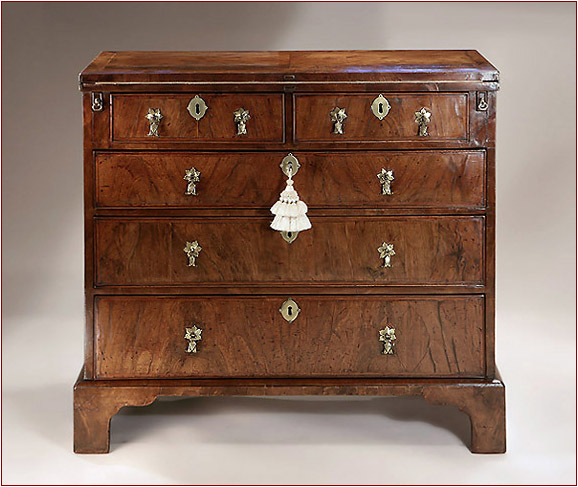
George I Walnut & Walnut Veneered Bachelor's Chest
England, c1715-20, retaining the original brass cotter-pin mounted pulls, escutcheons
These small chests with folding tops were introduced during the late 17th century,
being made through the mid-18th century.
As well, do be aware :
some on today’s market were constructed recently from "re-purposed" small chests!
The earlier bachelor chests are considered "sophisticated pieces",
and "highly prized" when in original state.
Is indeed unclear just how these chests were described at their inception.
"Dictionary of English Furniture" (MacQuoid & Edwards)
depicts a 1705 example (Chests of Drawers, Fig. 28a),
simply described as a "walnut chest with folding top....."
A 1726 inventory of Sherborne House, Dorset, refers to
"2 folding walnut dressing tables drawers to the bottom";
and another :
“walnut dressing table to fold up with drawers to the bottom”.
Yet another description from the 1725 dressing rooms at Cannons is
“Twylet (toilet) chest”.
Thus, these delicious small chests had various purposes -
as did many pieces of small 18th century furniture.
The folding tops of some "bachelor chests" are inset with baize, as below :
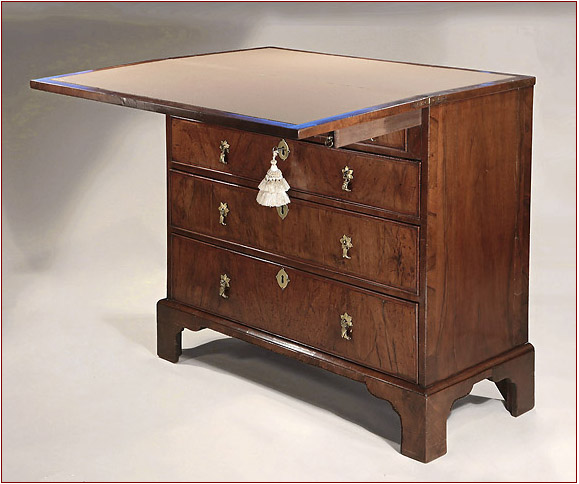
intended for "preparing clothes" - as the "brushing" of dust from clothing.
Others have tops that fold out to reveal
surfaces of walnut or mahogany (depending upon age),
some of those even having drawers fitted for inkwells and pounce-pots -
clearly indicated for writing, as this one :
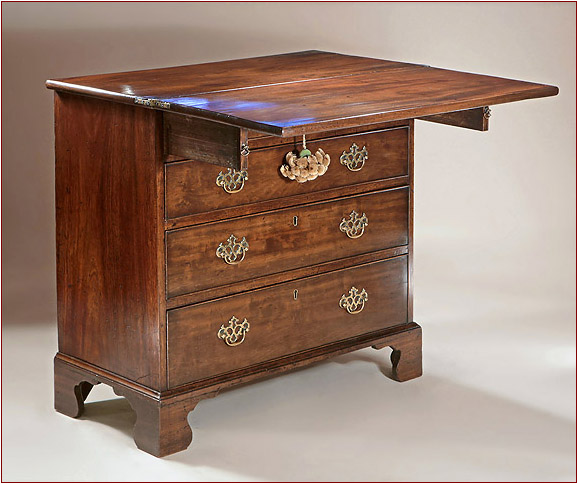
George II Cuban Mahogany Bachelor's Chest
England, c1745, original surfaces and brasses
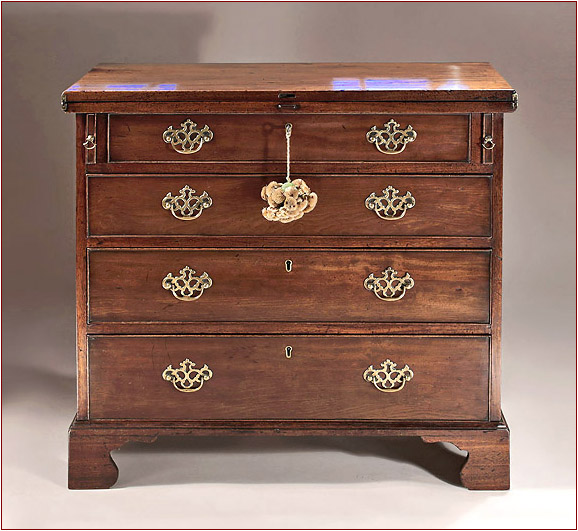
And some "bachelor's chests" opening to wooden surfaces
also have "brushing slides" below the fold-out tops.
However the distinguishing factor for “bachelor’s chests” is the fold-out top.
THE DRESSING CHEST :
On the other hand,
chests with brushing slides - particularly the diminutive ones -
are most correctly termed "dressing chests" -
i.e. a gentleman’s chest for dressing,
and from which the "bachelor’s chest" is thought to have evolved.
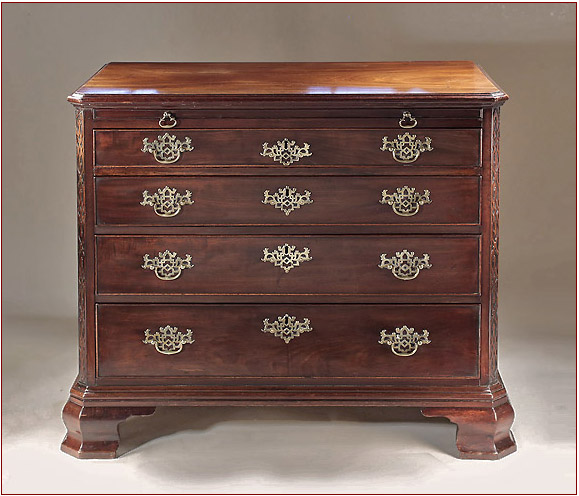
Early George III Cuban Mahogany Diminutive Chest of Drawers,
with Brushing Slide, England, c1765, The Top 35.5" Wide
Of particularly strong form and design,
retaining an excellent surface and original pierced brasses
However, the "dressing chest", or "diminutive chest with slide"
has no fold-out top, but a "slide" usually above the top drawer.
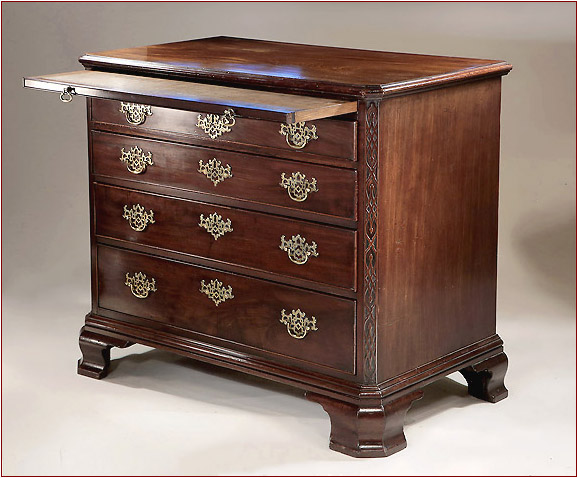
These chests can be correctly described as :
"dressing chests"
"small chest with slide"
"diminutive chest with brushing slide", etc.
But not as a bachelor's chest!
Small chests with slides were made throughout the 18th and early 19th centuries.
The value of a "dressing chest" can be great or little -
depending upon timber, workmanship, condition and cabinetmaker.
It remains a surprise to many that smaller chests,
(as described in one of our previous emails)
are usually of finer craftsmanship and of more value than larger chests -
especially larger chests intended for out-of-sight storage.
(This latter "larger" category does not include the grand "commode").**
I hope this distinction will be of assistance when looking, describing, and evaluating
small chests with "folding tops" -
and small lovely chests with "brushing slides".
Should you wish to see the details on these three chests,
please click the images or titles. |